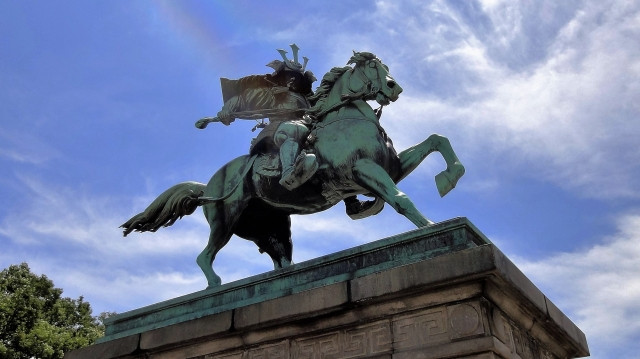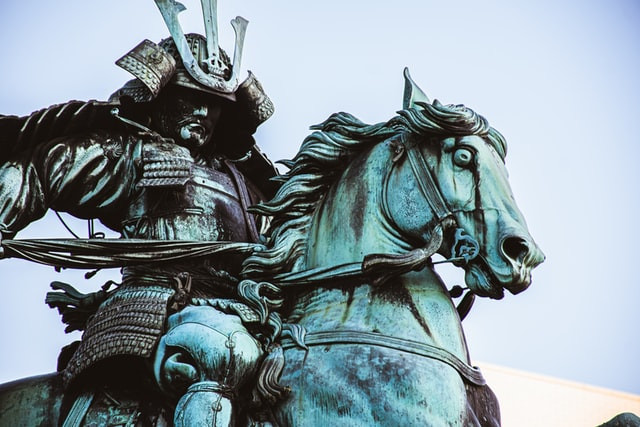The 47 Ronin story is known as one of the greatest tales of vengeance in history. It depicts the loyalty of samurai to their master, and has been the inspiration for many works of art since. Many people come to see their graves in Tokyo to honor these legendary warriors.
Table of Contents
- Introduction to the 47 Ronin Tale
- Legendary Status
- Sengakuji Temple and 47 Ronin Museum
- In Conclusion
Introduction to the 47 Ronin Tale
In Japan, the tale of the 47 ronin is called 赤穂事件 (Ako jiken - Ako incident). Ako is what is known today as Hyogo Prefecture.
This story takes place in the early 18th century. During that time, Japan was ruled by the Tokugawa Shogunate. The story goes that a daimyo named Asano Naganori attacked Kira Yoshinaka, a superior official, who kept insulting him. Though Kira got away unscathed, Lord Asano was sentenced to death for such an action and was ordered to commit 切腹 (seppuku - a ritual suicide for samurai). He and his family were stripped of power and thus he was buried as a disgraced man.

As a result, the forty-seven loyal retainers of Lord Asano were forced to become 浪人 (ronin) or 浪士 (roshi), samurai without a leader.
[Fun fact: The word 浪人 is still used today, but to refer to students who take a gap year to study for and reapply to the high school or university they want to get into.]
The 47 ronin were furious at the fate of their leader and the fact that Kira had gotten away without consequence, but of course, Kira’s own people were on guard for an attack. So they decided to avenge their lord’s death at a later time. After waiting for almost 2 years, the 47, led by their leader Oishi, attacked Lord Kira when he finally let down his guard and beheaded him. As a consequence, all 47 ronin were sentenced to seppuku just like their leader and all the samurai obeyed the command to do so.
Writer's Pick
Legendary Status

So what happened as a result of the event?
First, the incident, both the cause and what the ronin had done, spread rapidly across the country and they were lauded as heroes for upholding samurai values, especially that of loyalty. There are even reports that the shogunate received petitions from the public asking them not to sentence the ronin. It’s said that the 47’s actions allowed the Asano family to regain their status. The ronin were buried at Sengakuji Temple where Asano had been laid to rest.
While some disagree that these men were actually heroes, this is the generally accepted story.
Depictions in media
Works depicting this story and anything based on it is referred to as 忠臣蔵 (Chushingura). It remains one of the most popular stories in Japan, as well as around the world. It was depicted in kabuki stage plays and many other traditional Japanese-style storytelling.
It has gone on to result in many novels, films and tv dramas. Many famous Japanese actors have played a role in one of the many retellings. Hollywood has even made a couple of films said to be inspired by the original tale but with their own spins. People are inspired by the bravery and loyalty of the 47 ronin, even to this day.
Sengakuji Temple and 47 Ronin Museum

As mentioned above, the 47 along with their leader Asano are buried at Sengakuji Temple in Shinagawa, Tokyo. It’s said that they brought the head of Kira there to the grave of Asano when they had achieved their revenge.
Since the Ako Incident, people have visited Sengakuji to pay their respects to these leaders. And people still do today. You can burn incense to pay your respects.
There’s even a 赤穂義士記念館 (Akogishi Kinenkan - the Ako Samurai Memorial Hall) on-site, where visitors can learn more about the incident and see various artifacts related to what happened. While visiting the temple and the graves is free, it costs 500 yen to go inside the memorial hall.
Akogishi Festival

On December 14, a festival called 赤穂義士祭 (Akogishi-sai - the Ako Samurai Festival) is held every year to commemorate the Ako incident and the ronin whose graves are at Sengakuji. The usually quiet and small temple’s courtyard becomes filled with people. Monks hold a ceremony to pray for the spirits of the ronin, while people dressed up as the 47 parades from Zojoji Temple by Tokyo Tower for about 3 km in a solemn reenactment of what happened at Sengakuji Temple on the day they avenged their leader. There are even food stalls set up for people who visit the temple and the festival that day.
Access and Opening Hours
Sengakuji Station (Toei Asakusa Line) is the closest station to Sengakuji Temple. It’s only a minute or so walk from the station. Or you could walk from Takanawa Gateway Station (JR Yamanote Line, Keihin Tohoku Line) for 7 minutes.
Opening Hours
The opening hours of the temple and the museum vary depending on the time of year, so make sure to check out the official website to see when it’s open.
※ Sengakuji Temple
In Conclusion

Sengakuji Temple is one of the most famous samurai-related locations to visit in Tokyo, especially of such a famous story. Many come here every year to pay their respects to the legendary 47 from history. To learn more about or to appreciate this story to the fullest, it’s best to make a visit.
And if you want to know what else to do in the area, check out our article about Shinagawa!



































